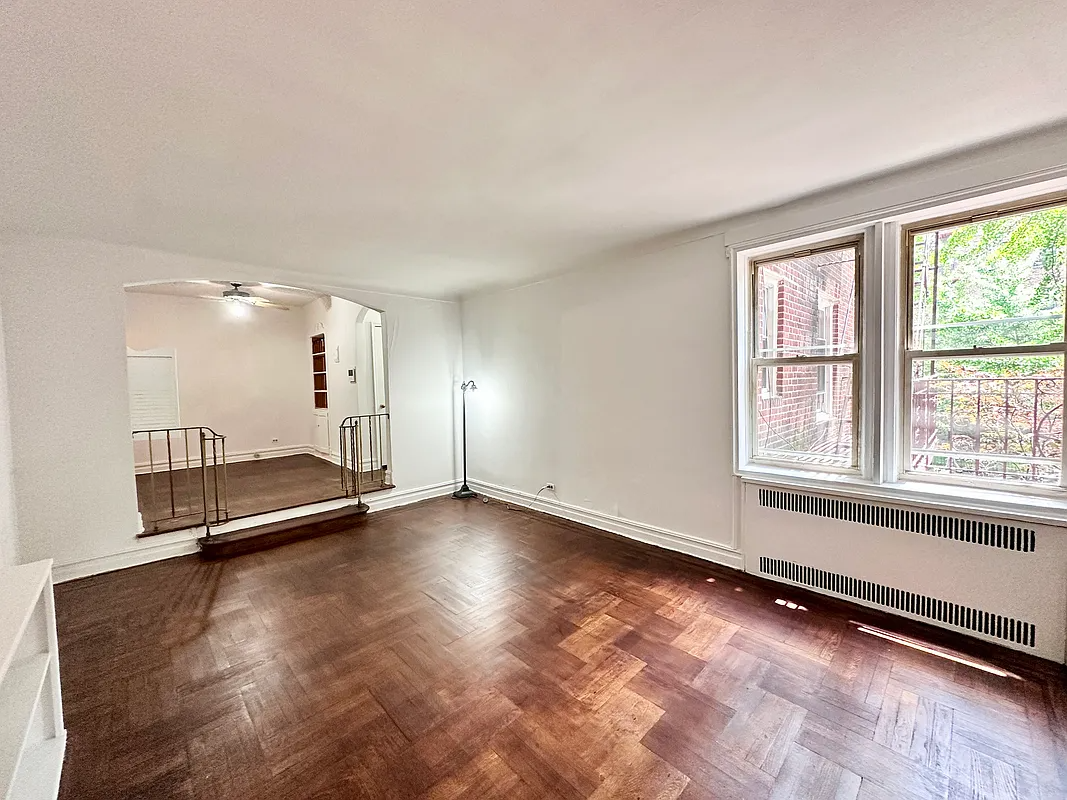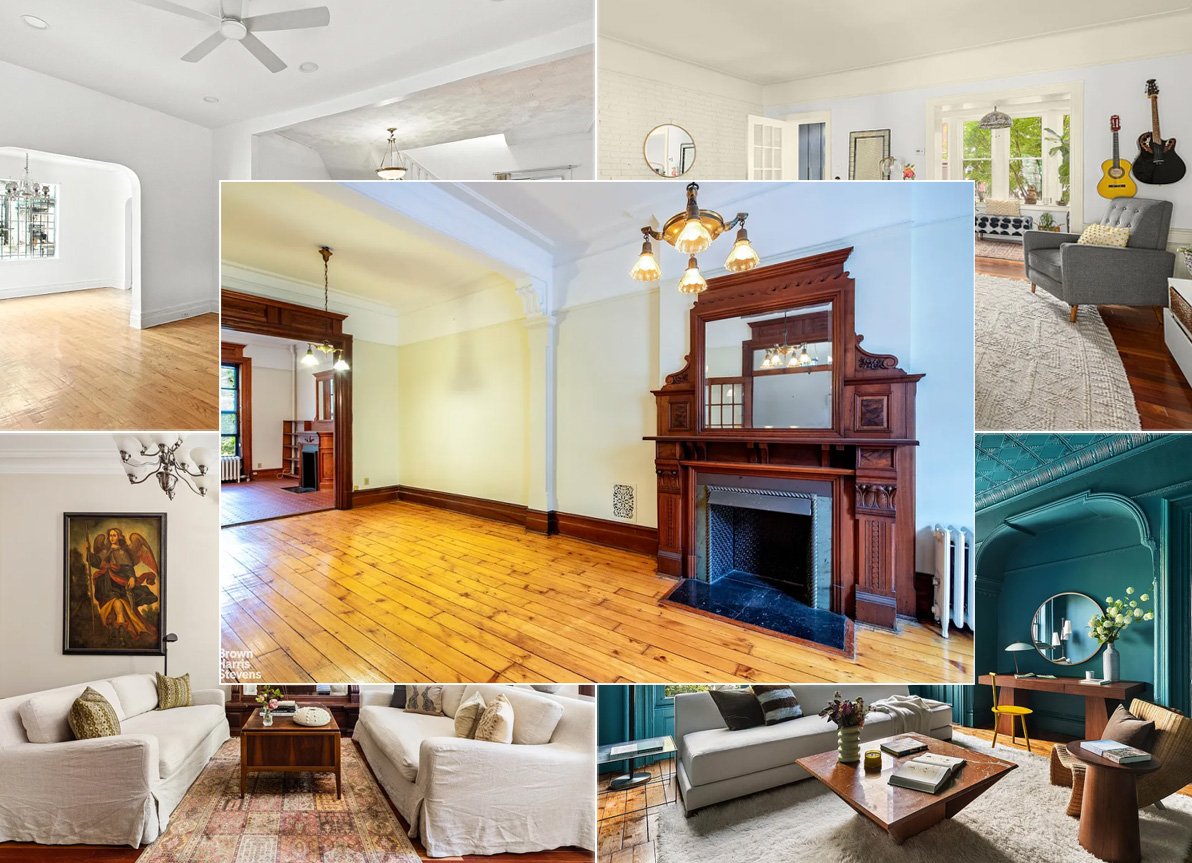LPC Considering Two Other Possible Landmarks
Earlier this month we told you about two buildings with public hearings at the March 22nd LPC meeting, and two more building of note have joined the agenda to be considered for calendering. The first is the East New York Savings Bank, currently a Banco Popular at 1117 Eastern Parkway. According to the LPC, “It…


Earlier this month we told you about two buildings with public hearings at the March 22nd LPC meeting, and two more building of note have joined the agenda to be considered for calendering. The first is the East New York Savings Bank, currently a Banco Popular at 1117 Eastern Parkway. According to the LPC, “It is a fine example of late 1920s branch bank design, distinguished by its exceptional bronze and stone sculpture by one of the leading designers of the period.” The limestone-clad neo-Romanesque was finished in 1929 and designed by Holmes & Winslow. The second, in Fort Greene, is the Paul Roebson Theater at 40 Greene Avenue. From the LPC: “Alterations to the building appear to be few, including the removal of some stained-glass windows and painting of the facade, but nevertheless this early Brooklyn church is a significant example of vernacular Gothic-style architecture and also an important reminder of the borough’s rich religious history.” You can see some interior pics on this post by Clinton Hill Blog and read more on the history of building after the jump.
Photos via LPC
Via the LPC:
“The Gothic Revival style building at 40 Greene Avenue appears to have been erected during the 1860s for the Fourth Universalist Society, and was originally known as the Church of the Redeemer. The brick building with a stone front was put up for sale in 1868 and was purchased around 1869 by Temple Israel, one of the earliest Reform Jewish congregations in Brooklyn (possibly the first). When it was organized in 1869, the Temple Israel congregation rented the hall of a nearby Young Men’s Christian Association for its worship. Within a few months, its membership had grown so significantly that they required a larger home. At the time Temple Israel acquired the building it was described in the Brooklyn Daily Eagle as modest in size, ornament and decorations and well-lit from both the front and the back with no side windows due to the proximity of neighboring houses. By 1889, Temple Israel had outgrown the building. The structure was sold to the Polish Catholic Church and became the new home of St. Casimir’s Roman Catholic Church, which had previously worshipped at a small frame structure on Lawrence and Tillary Streets. The four-sided cupola and spire surmounted by a cross which presently adorn the building were added at this time. Newspaper records indicate that other remodeling work may also have occurred when St. Casimir’s took over the building. The present appearance of the building’s facade, a masonry elevation articulated by a pair of large round-arched door openings, elongated round-arched window openings containing stained-glass panels, a central rose window surmounted by a triangular pediment, and pointed pinnacles and pediments at the roofline, probably also dates to this time. St. Casimir’s R.C. Church sold the building sometime around 1980. The Paul Robeson Theatre came to occupy the building at 40 Greene Avenue in the early 1980s, having relocated from Jamaica, Queens. Through the theater company, which has been noted as one of the few all-African-American owned theaters in the United States, the space became available for plays and concerts and was also home to in-house productions.”





Morralkan, we tried to get the Nostrand Avenue bank to host a fundraising event for the Crown Heights North Association, and they totally caved, after originally saying yes. It is gorgeous inside there. Not surprising, as same architects as the Dime Savings Bank downtown, and the Williamsburg SB on Hanson Place. (Halsey, McCormack and Helmer)
The Utica/Eastern Pkwy bank is a beautiful structure. I remember going there many times as a boy, in antediluvian times. The outside is quite grand, though it probably could use a little work. The interior, however, is rather worn. I guess if Banco Popular did more business there, they might spend some bucks sprucing it up. Their Nostrand Avenue branch is in better condition and has quite a grand lower (safe deposit box) level. That bank would actually work really well for receptions, as long as the money was locked up and there was some security. Banco Popular doesn’t actually own the Nostrand Ave. building; they rent.
http://bstoner.wpengine.com/brownstoner/archives/2010/11/building_of_the_183.php
—
Yes, MM, that’s it. I just posted there, since there weren’t any posts already.
Prezanon, are you talking about the former Savoy Theatre, at 1515 Bedford? Here’s the link:
http://bstoner.wpengine.com/brownstoner/archives/2010/11/building_of_the_183.php
MM, do you know anything about the building at Lincoln Pl. and Bedford? I think it is the NE corner. It has windows something like the ones in the banks you are featuring. Perhaps you already wrote about it and I missed it.
(my google street-searching wandered from your featured banks to this corner 🙂
These are both great. I had actually been looking for info on the Paul Robeson theater, for use as a BOTD, and had come up with dead ends, on line, anyway. This is great. Both are impressive buildings in their own way.
The bank is at EP and Utica Avenue. Landmarking will be a first in the area, far to the east of the present Crown Heights North HD, and in an area with some great architecture that’s been unnoticed for far too long. Banco Popular’s sister bank, at EP and Nostrand, a better building, should be included in Phase 2 of CHN’s historic district.
I hope that this will help steer some preservation $$ to that Robeson Theater church. It’s beautiful, but looks to be in very poor shape.
I never said it was “unilateral” — Jesus H. Christmas. Did I say that?!
Tybur6 – LPC does not unilaterally landmark swaths of land or buildings.